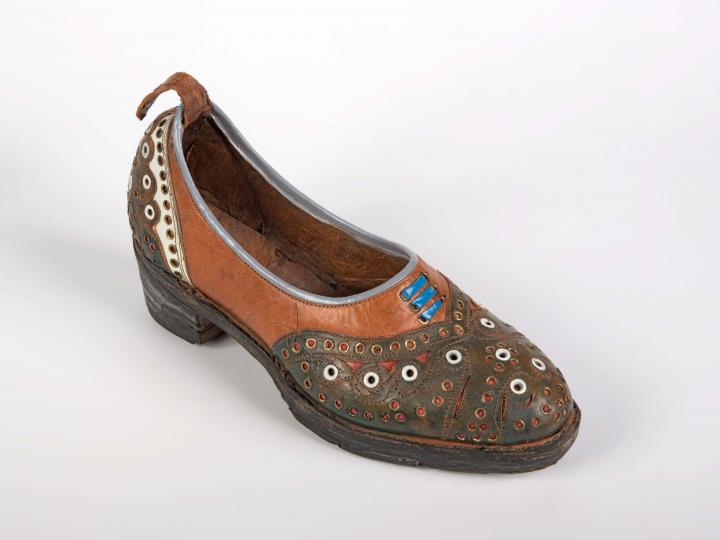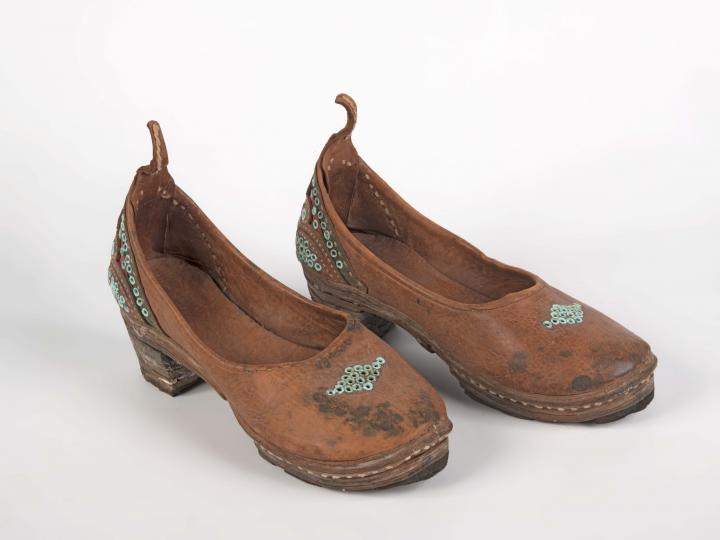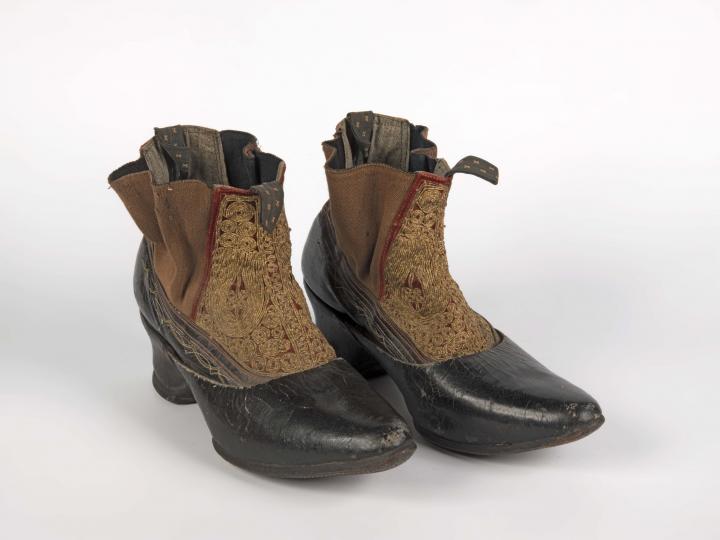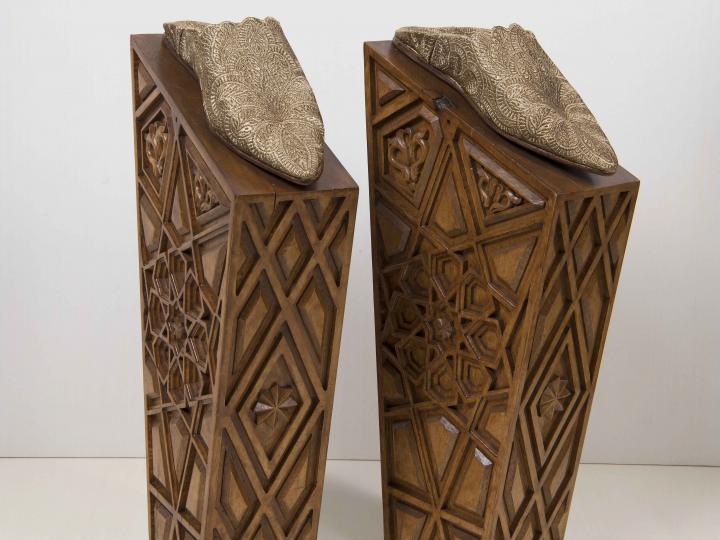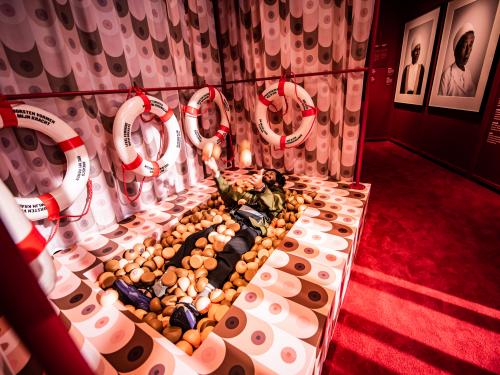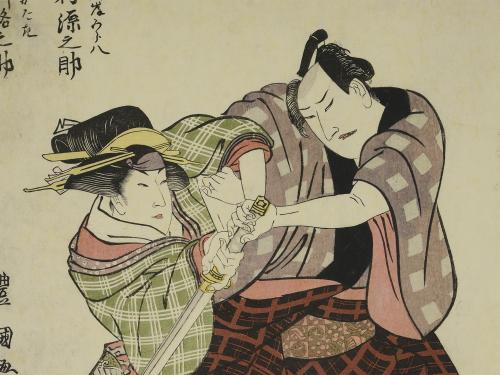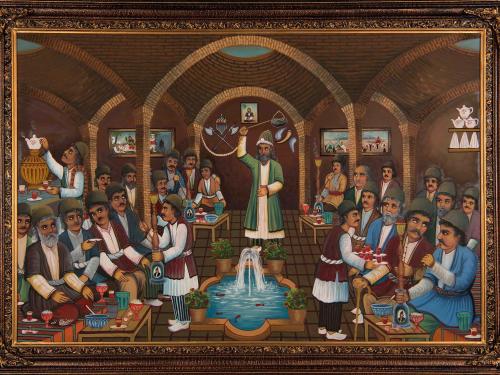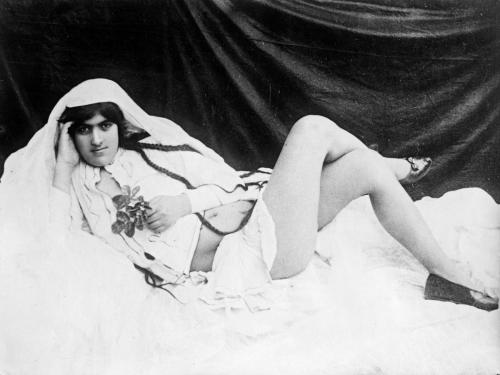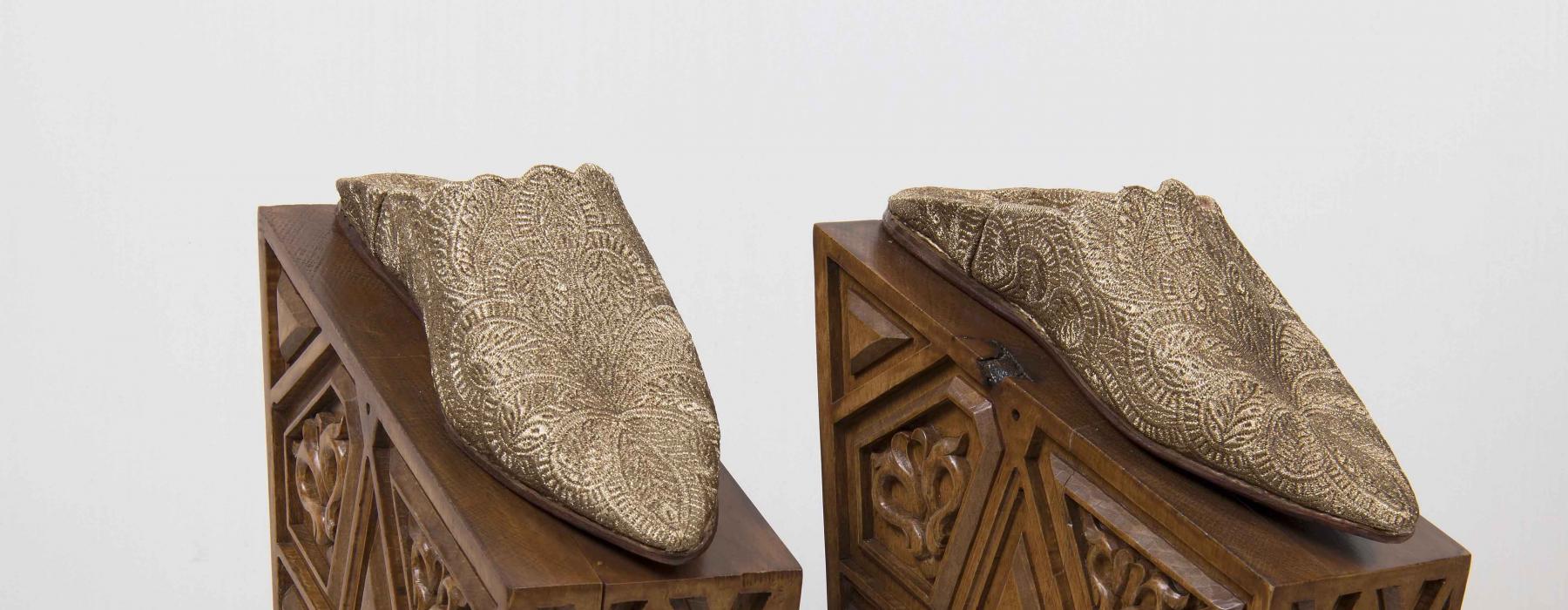
In the exhibition you will see a collection of heeled footwear from various cultures and times. The relationship between heels and power has changed a great deal throughout history. Nowadays high heels are associated with women’s shoes, but this has certainly not always been the case. Long ago, people wore high heels for practical reasons. Butchers in ancient Egypt wore them so as not to get slaughtering waste on their feet, and riders in Mongolia wore them so that their feet sat more firmly in their stirrups.
It was not until the sixteenth century that heels became associated with vanity, when Catherina de’ Medici took them from Florence to Paris. When King Louis XIV came to power in France, the heel came to symbolise wealth and nobility, for both men and women. Indeed, only courtiers were permitted to wear red heels. There was also a strict rule that no one was allowed to wear heels higher than the king’s. Heels became less popular during the French Revolution, as they were forbidden by Napoleon, and aristocrats feared that if they wore heels poor people would recognise them as wealthy.
After this, both men and women stopped wearing heels for a time, until they reappeared on pin-ups and in other contexts. The image of heels then became associated mainly with femininity and eroticism. Over the past few decades, however, the tide has turned a little, now that there are so many women – wearing flats or high heels – in the workplace.
